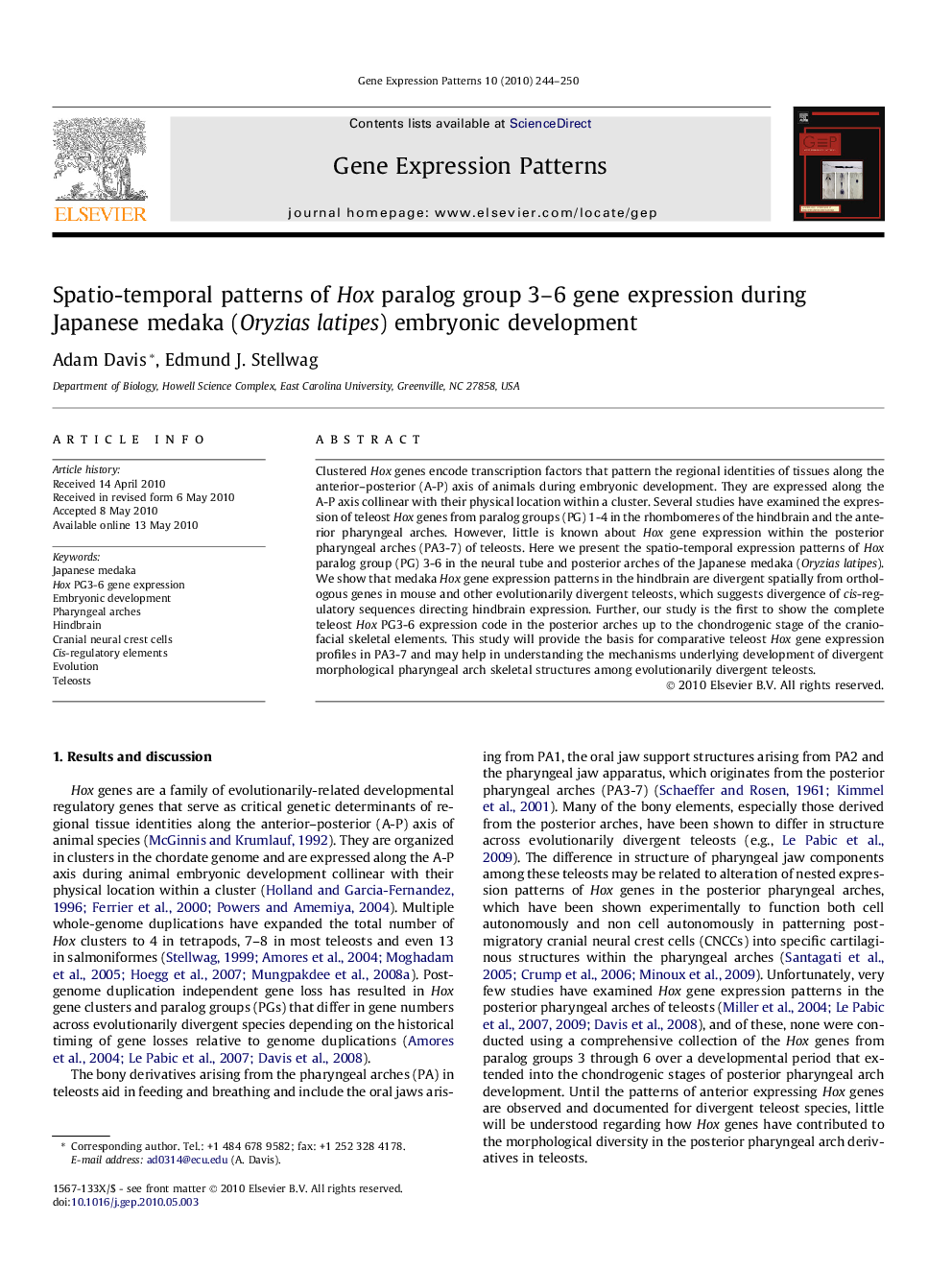| کد مقاله | کد نشریه | سال انتشار | مقاله انگلیسی | نسخه تمام متن |
|---|---|---|---|---|
| 2182072 | 1095439 | 2010 | 7 صفحه PDF | دانلود رایگان |

Clustered Hox genes encode transcription factors that pattern the regional identities of tissues along the anterior–posterior (A-P) axis of animals during embryonic development. They are expressed along the A-P axis collinear with their physical location within a cluster. Several studies have examined the expression of teleost Hox genes from paralog groups (PG) 1-4 in the rhombomeres of the hindbrain and the anterior pharyngeal arches. However, little is known about Hox gene expression within the posterior pharyngeal arches (PA3-7) of teleosts. Here we present the spatio-temporal expression patterns of Hox paralog group (PG) 3-6 in the neural tube and posterior arches of the Japanese medaka (Oryzias latipes). We show that medaka Hox gene expression patterns in the hindbrain are divergent spatially from orthologous genes in mouse and other evolutionarily divergent teleosts, which suggests divergence of cis-regulatory sequences directing hindbrain expression. Further, our study is the first to show the complete teleost Hox PG3-6 expression code in the posterior arches up to the chondrogenic stage of the cranio-facial skeletal elements. This study will provide the basis for comparative teleost Hox gene expression profiles in PA3-7 and may help in understanding the mechanisms underlying development of divergent morphological pharyngeal arch skeletal structures among evolutionarily divergent teleosts.
Journal: Gene Expression Patterns - Volume 10, Issue 6, September 2010, Pages 244–250